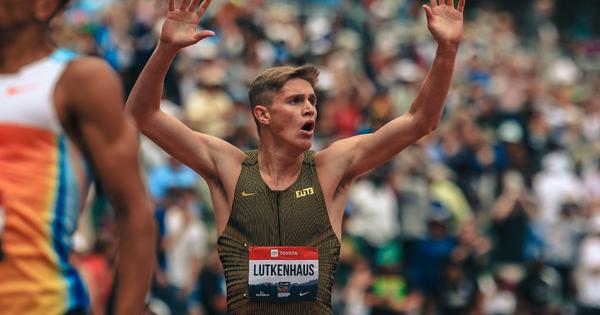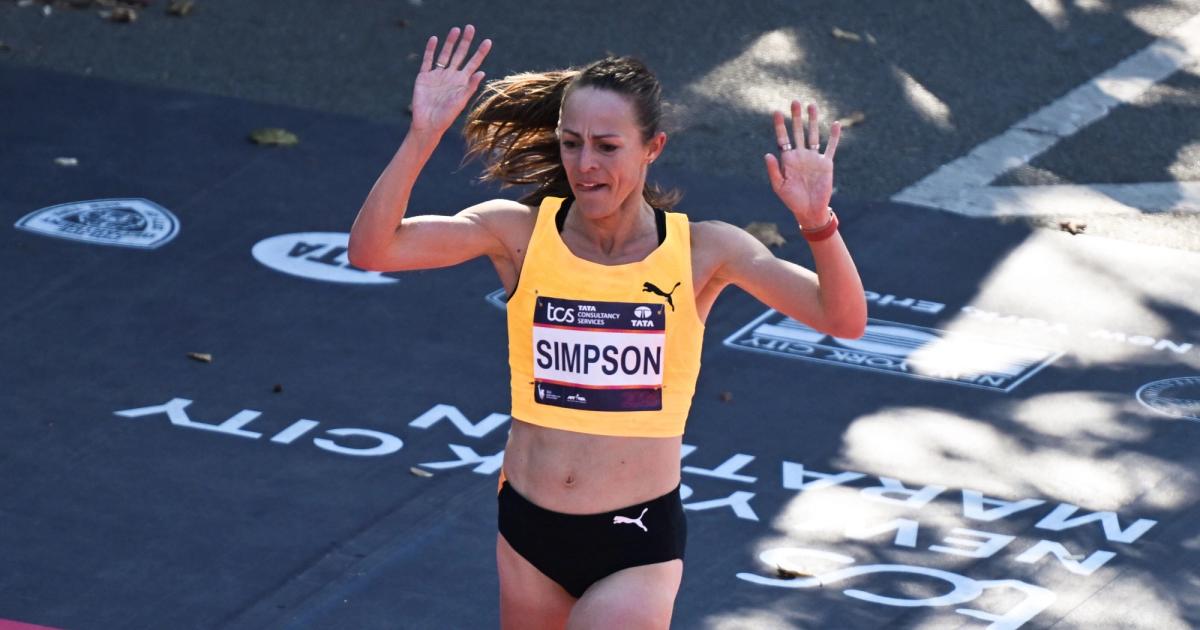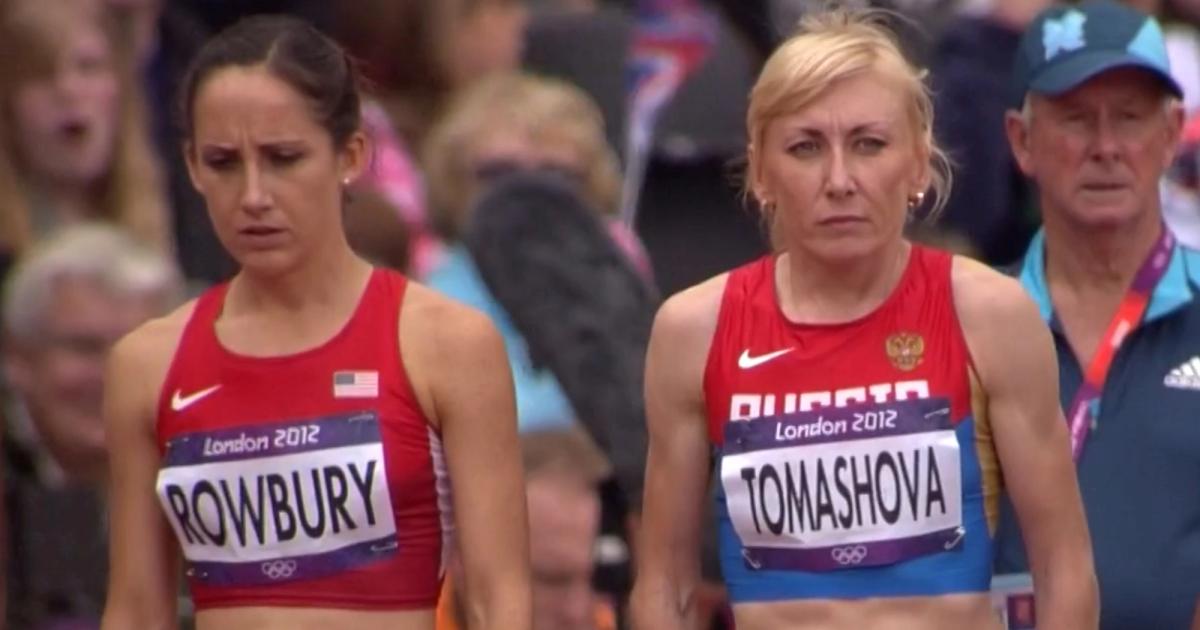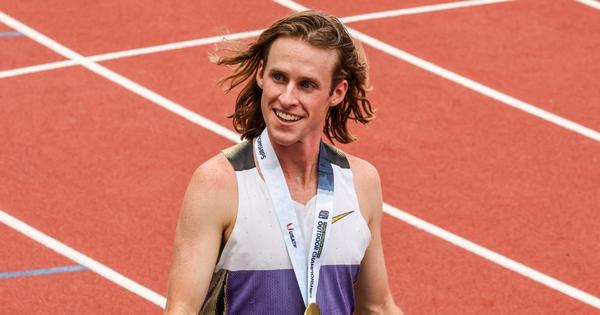By Paul Snyder
August 13, 2025
To the best of our knowledge, Cooper Lutkenhaus was the first guest in CITIUS MAG Podcast history to call Chris Chavez “sir.” The high schooler from Fort Worth, Texas, was clearly raised with impeccable manners, but it was still amusing to hear him address our 32-year-old boss with such respect.
But the “sir” interjections were also a striking reminder of the generational gap between the sport’s up-and-coming stars and many, if not most, of its fans. This reality was stressed again when Lutkenhaus couldn’t remember the name of fellow Texas legend and all-time great middle-distance runner Leo Manzano. Lutkenhaus was all of three years old when Manzano won his silver medal in London, so it’s understandable he might be foggy on the history.
But it got us thinking: Is the career of Leo Manzano—Olympic silver medalist, 2 x U.S. champ, 4x NCAA champ, London Diamond League winner, and owner of a 3:30.98 1500m PB… pre-super shoes!— ancient history now? Is Matthew Centrowitz’s Olympic gold in 2016?
Well… basically, yeah. But that doesn’t mean ancient history can’t be cool! Covering the entire scope of 1500m specialists in the U.S. prior to the Rio Olympics would take up too much space, even with Lap Count’s middle-distance bias, so we’ll focus on the track record of Team USA in the 21st century so far.
When compared to the high water mark that is the state of the event today—the reigning Olympic 1500m gold and bronze medalists are both American… c’mon now—the early 2000s have a more complicated legacy. There were several World Championships at the turn of the millennium where the U.S. was unable to send three men and women in the 1500m as the qualification standard occasionally proved elusive. But that doesn’t mean it was the dark ages.
Regina Jacobs was the most internationally competitive American in the 1500m/mile throughout the 1990s, taking home two World Championship silver medals in that decade. She won every U.S. 1500m title from 2000 to 2002, but in 2003 she tested positive for THG—the performance-enhancing drug made world famous as a result of the BALCO doping scandal—and promptly retired from the sport when she was handed a four-year ban. Okay… maybe not the best example.
Meanwhile, percolating up through the high school ranks was a promising young Virginian named Alan Webb. It’s impossible to overstate how big of a deal Webb’s ascendance was to American track and field. In 2001 he became the first American high schooler to break four minutes for the mile indoors, then that summer set the still-intact high school record of 3:53.43 at the Prefontaine Classic. Webb breaking Jim Ryun’s record was a broadly recognized cultural event—he even yucked it up with David Letterman! Webb turned pro after one year of collegiate running at Michigan, and made his first U.S. team for the 2004 Olympics. As a professional, Webb’s career highlight was undoubtedly breaking the American mile record—3:46.91—in 2007, which he held until Yared Nuguse ran faster in 2023. Yet global medals… heck, sometimes even global finals still proved elusive.
That changed with the next wave of American 1500m talent that began to crest around 2006. A converted steeplechaser, a handful of collegiate wunderkinds, and a Kenyan-born superstar were about to turn the state of the event on its head.
Bernard Lagat still holds the Kenyan national 1500m record—3:26.34. While representing his native Kenya, he earned Olympic bronze and silver and World Championship silver. That’s all stuff that belongs on the headstone of a completed career. But Lagat wasn’t finished, and in 2004, he became a naturalized U.S. citizen. The exact timeline of his switch from Kenyan to American allegiance is complicated, but regardless, he first represented the U.S. internationally in 2007, and promptly struck World gold in both the 1500m and 5000m. He was also the bronze medalist at the 2009 World Championships in the 1500m, and depending on who you ask, still holds the American 1500m record. He remained a medal threat at the international level into the 2010s, albeit over 5000m, taking silver in the event at the 2011 World Championships. Younger readers might know Lagat best as the person who put every U.S. masters record perpetually out of reach, but beyond that, he is probably the best American miler ever.
However, the Lagat Years were not a one-man show. We’ve already broached the topic of Leo Manzano, but let’s reiterate here that his crowning career achievement was one of the most incredible moments in American track and field history. When Manzano kicked down all but one person in the field at the 2012 1500m Olympic final, he claimed the first American medal in the men’s event since 1968.
At that same Olympics, Shannon Rowbury finished sixth. A great result for the 2009 World Championship bronze medalist. However, history—and drug testing—would vindicate Rowbury further, as that race would come to be known as one of the dirtiest ever contested. Six of the top nine finishers have at one point or another failed a drug test. Long, sad story short, Rowbury is now considered the third-place finisher from that race, making her a two-time global medalist.
Rowbury’s prime years overlapped with Jenny Simpson’s, meaning from a strictly “how many global medal threats does the country possess in this event?” standpoint, the 2010s were likely the best years for the women’s 1500m in national history. Simpson, despite being the first NCAA athlete to break the four-minute barrier in 2009, stuck with the steeplechase for a bit and didn’t rep the U.S. in the 1500m on the world stage until 2011, when her decision to switch events looked like a genius move because she won World Championship gold. She again medaled at Worlds in 2013, grabbing silver, kept the U.S.’s Olympic bronze in the 1500m streak alive in 2016, and—though outside of this exercise’s stated range of years—secured another World silver for good measure in 2017.
Then of course, our trip down recent-ish memory lane wouldn’t be complete without a dedicated paragraph to Centro, who we’ve also already mentioned. To new fans of all ages reading this, he was the man who won Olympic 1500m gold eight years before Cole Hocker did—the subject of a YouTube video coaches might show their milers to teach racing tactics. When Manzano was sprinting down the homestretch to secure silver, Centrowitz was a few clicks back, closing hard, but ultimately settling for fourth by a margin of just 0.04 seconds. Look, you win Olympic gold, you’re bound to be remembered. But if he’d retired with two Olympic medals on your mantle, Centro would be permanently entered in any future G.O.A.T. discussions.
What’s the point of all this, other than a history lesson for recent subscribers and/or Tokyo-bound high schoolers? Perhaps it’s that track and field is a sport that changes very quickly, but that it’s also a sport built for comparing the present to the past. Records get broken and legends retire. Times that were once mythical become commonplace. But to really understand the greatness in front of us now, every once in a while we’ve gotta retreat back into the realm of nostalgia to remember how we got here.

Paul Snyder
Paul Snyder is the 2009 UIL District 26-5A boys 1600m runner-up. You can follow him on Bluesky @snuder.bsky.social.




